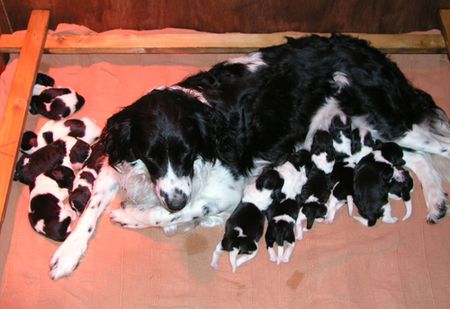 |
||
Dog Worming--Preventing your pet from getting worms .Dog worming is a vital component of dog health. The first step in preventing your dog from getting worms is to recognise that worming your dog is essential.The second step is to understand how infection by internal parasites takes place. And the third step is to effectively treat your dog to prevent an further re-occurrences. Why a re-occurrence? Because, a large proportion of puppies are born already infected with roundworms, despite the treatment of the mother prior to a mating. They are directly transmitted to the unborn puppies via the mother's uterus. If they avoid infection at this early stage, then transmission will almost certainly occur during the first few weeks of puppy hood, this time via faecal contamination.

Considering that an adult roundworm can reach up to 15cm in length, it is no surprise that left untreated, a puppy can develop serious complications, and eventually die. If the breeder was responsible then he/she would have treated the pups at 3/4 weeks, and then again before they went to their new homes. Further medication should be given during the period up until 6 months of age. Thereafter, a degree of immunity has built up in the dog, but treatment must be carried out for the rest of the dog's life. You need to consult your vet about what treatment, and when to administer it. Dog Worming and Tapeworms.The other common parasite that can affect pet's is the tapeworm. A female tapeworm is quite capable of depositing up to 200,000 eggs per day. Making them a particularly virulent threat, not just to dog's.Contamination comes in several ways, the three most noteworthy ways are.
If you follow a course of treatment right from puppy hood, then your pet should be parasite free all of its life. But, this isn't a 100% certainty. Consequently, early recognition of any problems is going to be useful.
Most worms can be seen in the the dog's faeces. They worm itself is whitish, sometimes moving, and the eggs resemble grains of rice. The tapeworm can also be seen in the faeces, and sometimes in the hair surrounding the dog's anus. The tapeworm causes irritation to the dog's anus, and the tell-tale sign is the dog dragging its back end along the ground in an attempt to reduce the irritation. Start as you mean to go on: So your first port of call is your local veterinarian. He/she will advise you what preventative measures you should take, and what products are currently proving to be effective. Worming your dog, and keeping it worm free, is an easy, but essential part of good dog health care.

"
| ||
|
| Dog Health Start Page | Dog Neutering |Caring for an Older Dog |Dog Names Start Page |Dog Videos Start Page | Return to Homepage Or you can .........
|
||
|
|
||